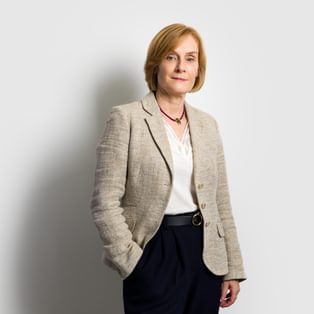Advisors and lawyers now have clients in the era of private equity and venture capital "big money" divorces. The quirks of the ways in which these asset classes work have particular implications for settlements, as this article shows.
The following article is illustrates the complexities arising from divorce settlements when one or both of the parties is involved in the areas of venture capital and private equity. These areas are changing: the new Labour government in the UK wants to tax "carried interest" differently from hitherto – which could affect the earnings of those involved. Even so, recent cases highlight why the VC and PE sectors create particular issues for those going through divorces.
“Big money” divorces move with the financial cycles. Pre-2000 they were the landed gentry. From 2000 to 2008 it was the bankers. From 2008 to 2020 it was the turn of entrepreneurs whose businesses had grown exponentially post-financial crash.
We are now in a new era – the private equity (PE) and venture capital (VC) “big money” divorces. The UK now has the second largest private equity market in Europe, relative to GDP. The UK PE industry has more than doubled from £1.8 trillion ($2.33 trillion) in 2012, to £3.6 trillion in 2023 (1). But it is the PE remuneration structures that make PE divorces unique, and why having advice not only from a matrimonial lawyer, but a funds lawyer too, is of fundamental importance. Bankers have traditionally received bonuses annually – but carry entitlement is awarded up front, with frequently decade long horizons for payout – what happens if a divorce takes place mid-way through the fund life?
Arguably co-invest rewards should be treated differently; it is often funded by the PE professional putting matrimonial funds in – but do judges appreciate that distinction?
However, this new era is "young.” Despite numerous PE divorces coming across our desks, there is only really one precedent setting case law – A v M [2021] and that case was decided at first instance, i.e. it is not an appeal decision and therefore does not bind other judges. It also related to a small PE house co-owned by the husband and his business partner, which is not the norm for the PE industry.
This means for PE professionals divorcing (and those thinking of pre-nuptial or mid-nuptial agreements), that whilst A v M is very helpful guidance, there is plenty of scope for lawyers to distinguish it from the PE cases on their desk – to seek to reshape the A v M guidance to achieve a better outcome for their clients.
A v M
In 2016 the husband was awarded carry and co-invest in “Fund 1.” In 2018, it was awarded to him in “Fund 2.” The wife petitioned for divorce in 2019 and the final hearing was in October 2021. The end of the two fund terms (if not extended) would be between 2025 to 2028. This gap between award, vesting and payout is entirely standard which means that this situation is not uncommon in PE divorces.
Mr Justice Mostyn (“Mostyn J”) alighted upon a linear, time-based, formula to determine the ‘marital’ element of the husband’s carry, which would be shared equally. Fund 1 was established in October 2016 (first close March 2017) with committed funds of €187 million ($203.7 million). Fund 2 was established in October 2018 (first close June 2019) with committed funds of €323 million. The funds had slightly different anticipated terms and extension periods, however Mostyn J used an assumed term of nine years from the first close for both. His formula to determine the ‘marital’ element, as applied to Fund 1, was:

Therefore 53 per cent of the carry in Fund 1 was marital (the wife would receive 26.5 per cent). The same calculation for Fund 2 produced 31 per cent as marital (the wife receiving 15.5 per cent). However, determining that the husband “would be much less unhappy if [the wife] were a shadow carry partner in one fund only” the judge “relocate[d] the wife’s share of the husband’s carry in Fund 2 in the husband’s carry in Fund 1.
Mostyn J factored in that the Fund 2 committed funds (and therefore potential carry value) were far larger than the Fund 1 size, meaning that this reattribution gave the wife a 48.53 per cent interest in the carry payout from Fund 1, and no entitlement from Fund 2. No account was taken of the relative performance of the two funds and the potential effect of treating the entitlement in this way. The wife’s entitlement was tied to the husband’s carry, i.e. as and when the husband received carry payouts, 48.53 per cent of that (net) would be transferred to the wife.
Comparatively Mostyn J shared the co-invest “equally.” He gave no reasoning for this different treatment of co-invest.
Possible alternative approaches
As above, A v M is the only recent PE divorce precedent. There remains scope for a different judge to take another approach:
1. In A v M the husband effectively started his own PE fund but most people working in PE are employees/partners in a large PE house. Another judge may say the post-divorce effort (and risk) in those circumstances is lesser than in A v M and discount the amount of ‘post-matrimonial credit’ in calculating the marital element.
2. Another judge may be willing to distinguish between carry payout on a European waterfall structure (aggregate/end of the fund life) and that on a US waterfall structure (deal-by-deal). They may also factor in the impact of clawback clauses.
3. It is arguable that the “harvest” phase of a PE fund, typically towards the end, is where most endeavour, risk and skill is at play. If the parties separated or divorced shortly before the harvesting phase, a different judge may take greater account of this ‘enhanced’ post-separation endeavour, rather than treating it linearly with the other phases.
4. Mostyn J shared the co-invest equally. There was no reasoning given. It is assumed that it was because the co-investment was made with marital funds. However, another judge may say that this unduly disregards the husband’s post-separation endeavour for the co-invest to payout or alternatively that the post-separation endeavour is adequately rewarded in his share of the carry.
5. Mostyn J used a marital period ending with the date of the trial, rather than the date of the divorce petition. If that date (July 2019) had been used, the marital element of Fund 1 would have been 29 per cent (compared with 53 per cent). Another judge may use the date of divorce petition or date of separation.
6. The use of the “establishment of the fund” start date might not be followed. Another judge may use an earlier relevant date, to reflect the preparatory work prior to establishing a fund. Or they may simply use the ‘first close’ date for A (in the calculation), taking the view that this is when the real effort, and investment, starts.
7. Mostyn J’s view was that carry is a “hybrid resource” with characteristics of income and capital. In dividing the carry in the way he did, the judge effectively treated it as capital. This capital/income distinction is crucial as it is well established law that applicants can share capital accrued during the marriage but have no right to share income. A different judge may treat it as income.
8. If Fund 1 didn’t meet the hurdle by 2026, and Fund 2 did, Mostyn J’s approach of aggregating the wife’s interest into Fund 1 would mean that she receives a nil payout from her 48.53 per cent interest, and the husband retains his Fund 2 payout in full. Another judge might say that is too high a risk of occurring, and not aggregate in the way Mostyn J did.
9. A v M does not address the situation where one party seeks to be ‘cashed out’ of the share that they would otherwise have in the other’s carry. Cashing out is arguably even more fraught with issues, particularly relating to valuation, but other judges may be amenable to it in the right circumstances.
In this "new era" of PE divorces, A v M is a helpful first precedent. But precedent setting cases ‘two’ and ‘three’ may be even more important. As will be getting the right matrimonial and funds advice.
This article was first published in Wealth Briefing on 15 July 2024, view the article here.






















